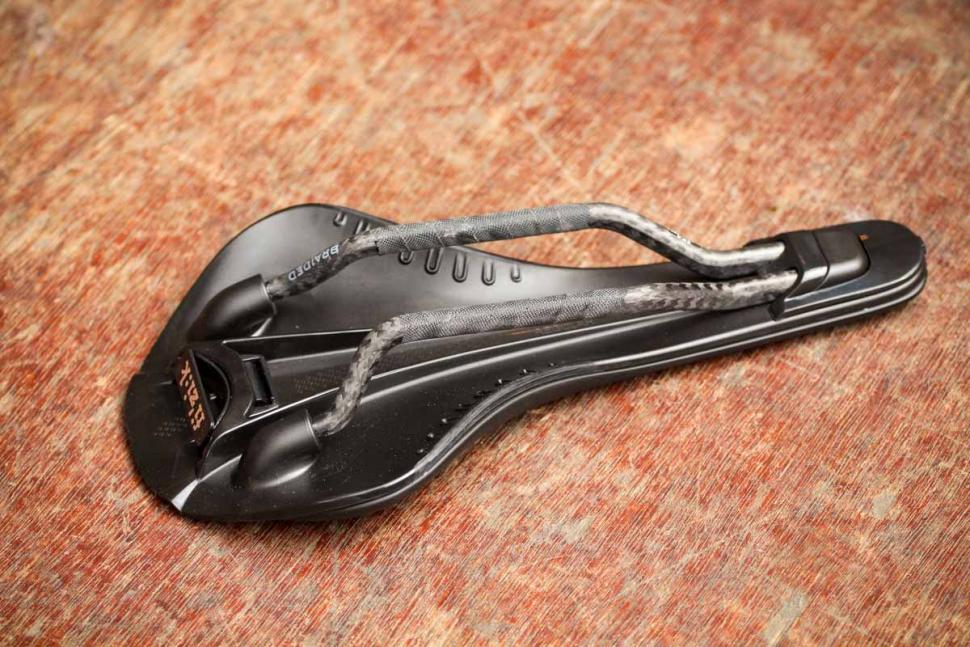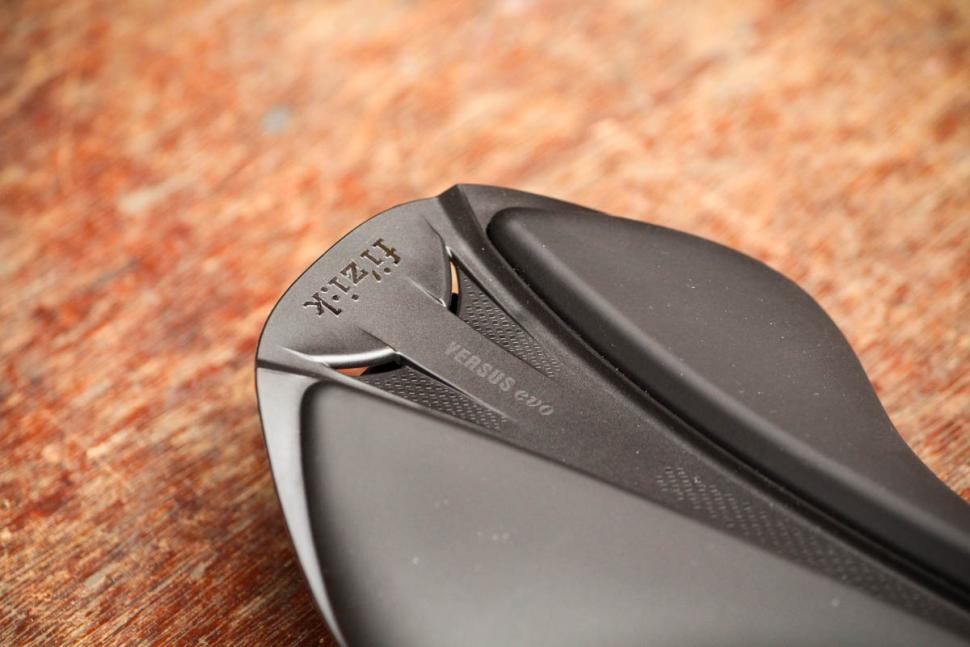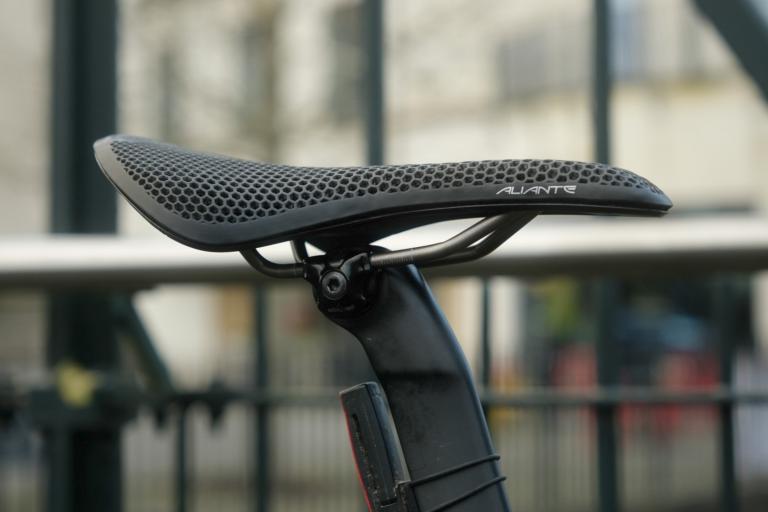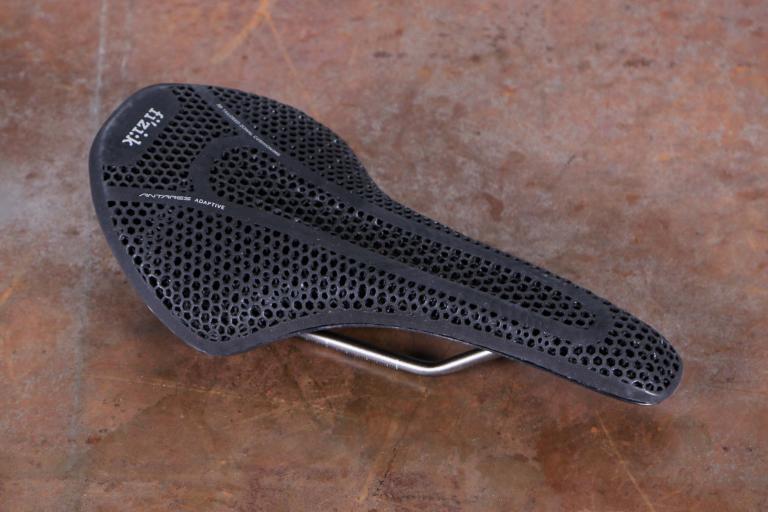- News
- Reviews
- Bikes
- Accessories
- Accessories - misc
- Computer mounts
- Bags
- Bar ends
- Bike bags & cases
- Bottle cages
- Bottles
- Cameras
- Car racks
- Child seats
- Computers
- Glasses
- GPS units
- Helmets
- Lights - front
- Lights - rear
- Lights - sets
- Locks
- Mirrors
- Mudguards
- Racks
- Pumps & CO2 inflators
- Puncture kits
- Reflectives
- Smart watches
- Stands and racks
- Trailers
- Clothing
- Components
- Bar tape & grips
- Bottom brackets
- Brake & gear cables
- Brake & STI levers
- Brake pads & spares
- Brakes
- Cassettes & freewheels
- Chains
- Chainsets & chainrings
- Derailleurs - front
- Derailleurs - rear
- Forks
- Gear levers & shifters
- Groupsets
- Handlebars & extensions
- Headsets
- Hubs
- Inner tubes
- Pedals
- Quick releases & skewers
- Saddles
- Seatposts
- Stems
- Wheels
- Tyres
- Health, fitness and nutrition
- Tools and workshop
- Miscellaneous
- Cross country mountain bikes
- Tubeless valves
- Buyers Guides
- Features
- Forum
- Recommends
- Podcast
review
£189.99
VERDICT:
A full-length channel, excellent padding and carbon build mean comfort is high – but so is the price
Weight:
168g
Contact:
At road.cc every product is thoroughly tested for as long as it takes to get a proper insight into how well it works. Our reviewers are experienced cyclists that we trust to be objective. While we strive to ensure that opinions expressed are backed up by facts, reviews are by their nature an informed opinion, not a definitive verdict. We don't intentionally try to break anything (except locks) but we do try to look for weak points in any design. The overall score is not just an average of the other scores: it reflects both a product's function and value – with value determined by how a product compares with items of similar spec, quality, and price.
What the road.cc scores meanGood scores are more common than bad, because fortunately good products are more common than bad.
- Exceptional
- Excellent
- Very Good
- Good
- Quite good
- Average
- Not so good
- Poor
- Bad
- Appalling
Fizik's Antares R1 Versus Evo Regular saddle takes longer to say than it does to get comfortable on. It's a light, upmarket carbon saddle that offers both central pressure relief and sit bone support, thanks to well-judged padding and useful flex – but it doesn't come cheap.
- Pros: Full-length channel, supportive padding, excellent comfort
- Cons: Slightly slippery covering, high cost
To clarify that short story of a name, Antares is the model, and it's designed for riders wanting the middle ground between completely flat and 'wavy,' raised-tail shaping.
> Find your nearest dealer here
The 'R1' indicates that this version is high-spec, with carbon braided rails – the cheaper and slightly heavier R3 has alloy rails.
'Evo' is a reference to Fizik's 'Spine Concept Evo', which uses spine flexibility to predict which shape you'll be most comfy with. In Fizik's parlance, the Antares is designed for 'Chameleons', the middle of its three definitions: Snake, Chameleon and Bull. If you're very flexy (Snake), your pelvis can stay pretty upright and – Fizik reasons – you'll be happy on a flat saddle. At the other extreme, non-bendy backs force the pelvis to roll forwards into a position (Bull) that requires a wavy, raised-tail shape to reduce pressure.
Chameleon is a mix of the two, and I found the gentle longitudinal dip worked really well for me. Obviously saddle fit is very individual, but Fizik's reasoning is sound and the explanation is clear, making it easy to home in on a good personal match.
Finally, and because yes, we're still dealing with that epic name, the 'Regular' refers to saddle width. The Antares comes in two widths: this 139mm Regular, or the 10mm wider Large.
Get the padding wrong with a full-length channel like this and it will never be comfy, but I found the Comfort Core foam spot on – soft enough to instantly relax on, yet firm enough to hold its shape and stay supportive. I rode it for up to three hours at a time, and never found it less than excellent. It's comfortable from one end to the other, too, whether you're over the tail or up on the nose for climbing.
The thin nylon shell is carbon reinforced and lacks any central cutouts, which can only help with stiffness and (arguably better still) provides protection from cold road spray. It's forgiving enough for noticeable compliance over bad surfaces in comparison to alloy-railed saddles, especially over high-frequency judder, which it really helps mute.
Nevertheless, overall it's a firm and reliable platform to push against during hard efforts. The shaping around your thighs is excellent, so there's no rubbing or pressure even if you sit way back.
> Buyer's Guide: 10 of the best high-performance saddles
One slight niggle is the microtex covering, which is a little too smooth to keep Lycra hooked in place, and can let you slide unexpectedly under heavy braking, on rough roads or during punchy pedalling. You may like the easy movement, of course, but I prefer more friction for deliberate weight shifts only.
The fabric has survived a few chain-cleaning inversions without suffering scuffs, though the uncovered plastic rear section does take some of the bike's weight.
Speaking of weight, the Antares R1 is pleasingly svelte at 168g, which is actually 11g lighter than the claimed weight of 179g. The slim shell and carbon rails – complete with attractive rough braiding – clearly play their part, and an ovalised, 7x9mm cross-section gives good vertical stiffness while minimising mass. I had no fitting issues either with saddle clamps or saddle bags on these rails.
Fizik has included its Integrated Clip System (a socket for compatible saddle bags) which is filled with a blank that bears the Fizik logo. It's a bit of a loose fit, so I took it out in case it fell out. Doing so saved 2g, and obviously made the Antares faster still...
> Buyer's Guide: 11 of the best women's saddles
This is a well-made saddle that both looks and feels worth the cost, but that cost is still high. Bontrager's Montrose Pro saddle offers a similar construction and weight, for instance, and is £150. Note the Montrose comes in a narrow option too, although its channel doesn't reach the nose, it's a little flatter along its length and the centre is open.
For less still you could have the Fabric Line, tested here in its £70 titanium-railed version – but available with carbon rails at a decent 183g for £140. Again, however, the channel doesn't actually reach the nose, so if you're doing a lot of steep climbing, the benefits are reduced.
Verdict
A full-length channel, excellent padding and carbon build mean comfort is high – but so is the price
road.cc test report
Make and model: Fizik Antares R1 Versus Evo Saddle
Size tested: Regular - 142mm
Tell us what the product is for
Fizik says: "The Antares R1 Versus Evo is a leading performance road saddle for riders who want a medium saddle profile and a pressure relief channel. Made for Chameleon riders with medium body flexibility and low pelvic rotation while pedaling, the Antares is a neutral profile saddle with support and flexibility so you can move to find your power spot and maintain comfort."
Tell us some more about the technical aspects of the product?
The company says this saddle "features a composite Carbon-reinforced nylon shell – with Wing Flex technology which enables flexibility where your thighs meet the saddle – and a light, strong, Braided Carbon rail. A Comfort Core foam layer beneath the neat, durable Microtex cover provides comfort, and is enhanced by the full-length comfort channel which reduces pressure on the rider's sensitive soft tissue and ensures that all weight is correctly supported across the whole surface of the saddle."
Rate the product for quality of construction:
9/10
Looks and feels excellent.
Rate the product for performance:
9/10
The padding, channeling and overall shape combine with excellent results, with a slight slipperiness the only niggle.
Rate the product for durability:
8/10
Remains unmarked from normal use.
Rate the product for weight (if applicable)
8/10
Slightly lighter than claimed, and what you'd expect for a carbon-rich construction.
Rate the product for comfort (if applicable)
9/10
The wide, full-length channel works very well to relieve pressure, while supportive padding and great overall shaping keep comfort high.
Rate the product for value:
5/10
It's a very good saddle, but then for £190 it really should be.
Tell us how the product performed overall when used for its designed purpose
Light, comfy and good looking, the Antares R1 is a pleasing and reliable thing to have on your bike.
Tell us what you particularly liked about the product
Pressure-relieving channel does exactly that, without adding any new pressure spots.
Tell us what you particularly disliked about the product
The shiny cover is a little too smooth for security under stress – more friction would be good.
Did you enjoy using the product? Yes
Would you consider buying the product? Yes
Would you recommend the product to a friend? Yes
Use this box to explain your overall score
Taken on its own, the Antares R1 is a great saddle: comfortable, light and appropriately flashy-looking. But while it certainly feels worth the money, there are other saddles – nearly as light, comfy and flashy – for appreciably less. It's the cost, plus the slightly slippery cover, that just hold it back from a 9.
About the tester
Age: 45
I usually ride: GT GTR Series 3 My best bike is:
I've been riding for: 10-20 years I ride: A few times a week I would class myself as: Experienced
I regularly do the following types of riding: general fitness riding, mountain biking
Latest Comments
- Rendel Harris 2 hours 8 min ago
What has the year got to do with it? Using a term for people with Down's syndrome as an insult was deeply offensive then and is deeply offensive...
- andystow 5 hours 18 min ago
I've been using Power Grips for over five years now. They're great.
- David9694 6 hours 8 min ago
Drivers ignored road closures at Colchester Half Marathon...
- David9694 6 hours 27 min ago
driverless, car-less......
- dh700 6 hours 30 min ago
I already mentioned the strategies that work, which are reductions of motor vehicle usage and lawlessness. For example, Sweden's population has...
- Surreyrider 8 hours 26 min ago
A lengthy reply that doesn't match the reality. I'm still never going to buy your wheels after the posts from a fellow Outcasts Cycling member in...
- eburtthebike 9 hours 44 min ago
It wouldn't matter if it was made last week in China out of plastic: it's still a good enough reason to deny cyclists safer roads.
- Smoggysteve 14 hours 17 min ago
That's a possibility. But if that were the case, it wouldn't explain how I still get it on Zwift where Garmin wasn't even in play. The power from...
- bikeman01 14 hours 53 min ago
They should bring back dog tax, sorry dog licences. That would fix everything, [sic].
- BikingBud 15 hours 46 min ago
Aren't 4*4 supposed to go off road?









Add new comment
1 comments
Any idea whether they offer this as part of their test programme? I've only ever managed to try the standard models before settling on my normal antares.
Now my position is getting lower and lower, the channel would be welcome. But its difficult to justify without riding one first?